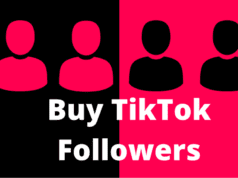
It’s happening. You’re about to launch your company’s first real social media marketing campaign.
Do you have any idea what you’re getting yourself into?
It’s okay to admit that, no, this is more than you bargained for. Fortunately, countless past social media marketing campaigns offer a compelling collective road map for first timers.
Let these 10 evidence-based “musts” light your way.
1. Run a Multi-Platform Contest — Then Another, and Another, and…
Running a social media contest isn’t as difficult as you’d think. All it requires is a prize of reasonable value — a period of complimentary service, perhaps, or an opportunity to lunch with your company’s founder — and a concerted effort to promote cross your entire social media ecosystem.
If you’re lucky, your followers will do much of the hard work of promoting the contest themselves. That should give you breathing room to plan your next contest.
2. Update Your Contact Information Across All Platforms
Before you wade too far into your first social media marketing campaign, make sure prospects whose interest you’ve piqued can find you when the time comes. Start by updating and completing your contact information across all social media platforms, even if you don’t plan concerted marketing efforts on them. This insurance company’s Facebook profile is a clear illustration of the power of a well-maintained contact list.
3. Start Stockpiling Memes (Seriously)
Memes are a low-stakes, high-impact way to humanize your brand and drive home key points about its products or services. Consult an online meme library and get a batch of digital commons memes in your hopper, or take a crash course in meme-making software (which isn’t difficult to use) and start making your own.
4. Identify One or Two Important Hashtags to Center Your Campaign, But Don’t Go Too Far
Before you go any further, familiarize yourself with the basics of effective hashtag use. These days, hashtag users face a minefield of potential pitfalls. Nothing screams “desperation” like peppering every social update with a hashtag sequence longer than the post itself.
Hashtags still have a place in social media marketing, but they’re best used sparingly and to maximum effect. Identify one or two hashtags that neatly encapsulate your value proposition or key selling points, and use them only where it makes sense.
5. Create a Social Media Style Guide
The AP Stylebook it isn’t, but your social media style guide should definitely be more comprehensive than you think. As in multiple pages with lots of subheads and bullets. Social media content is complicated!
Your goal here is to hold all employees cleared to post on your social media platforms to the same standards, while putting forth a unified brand image. Your audience is perceptive enough to notice incongruities; make sure you’ve left none to find.
6. Implement Binding Social Media Policies (If Not Already in Place)
By the same reasoning, your company needs a global social media policy that’s binding on all employees. Whether this includes employees’ company-linked personal accounts is up to you.
7. Create a Few “Edgy” Pieces of Content — But Not Too Many
Your social media marketing campaign must include a few viral plays. They probably won’t work, but your brand may come out looking better for them anyway. Do take the time to understand your audience, though — the meaning of “edgy” can vary a great deal depending on the context, and you don’t want to alienate the people you’re trying to convince to buy your products.
8. Set a Strict Advertising Budget for Each Platform
Don’t bite off more than you can chew. If you don’t have a big marketing budget to begin with, focus on tactics that drive engagement organically, rather than buying up paid ads willy-nilly. That adds up quickly.
9. Use Post Scheduling Software for Maximum Effect
Once your campaign is in full swing, you’ll have way too much content flying around to manually approve each iteration. Streamline your efforts with a social scheduling suite that lets you create, edit, and schedule content in advance of publication. Use the suite’s built-in metrics, or your platform’s if none are available in-suite, to measure content performance and adjust publication timing accordingly.
10. Set Up Your Position Players for Success
If your social media marketing campaign is as successful as you hope, your lead management needs will increase in short order. That means setting up downstream position players, including sales staff, account managers, and quality control specialists, for success.
In all likelihood, it also means staffing up. Maybe you can work your latest batch of job postings into your marketing campaign.
You Gotta Start Somewhere
As you move toward the official launch of your first social media campaign, you probably feel a complex stew of emotions.
It’s okay to be nervous, even scared, about what’s about to happen.
Will you invest untold quantities of time and manpower into a full-fledged campaign, only to hear crickets once it’s finally live? Or will your campaign become a victim of its own success, felled by overwhelming prospect interest that swamps your processing power?
Both of these outcomes are possible. Marketing campaigns do fail, or prove so successful that they cause more problems than they solve.
The most important thing you can do to keep your marketing campaign on track is to get into the proper state of mind. Resilience is important here: If you’re ready for whatever may come, your chances of overcoming the inevitable challenges and obstacles that do present themselves will increase.
One of the most successful marketing campaigns in recent memory, Popeye’s genius-level chicken sandwich promo, quickly became a victim of its own success — many locations ran out of product altogether, leaving droves of irate customers literally and figuratively on the outside.
But Popeye’s didn’t back down. Instead, it doubled down, running a hilarious (and amazingly effective) “bring your own bun” campaign that made light of the sortage. With that stroke of creativity, Popeye’s almost certainly won back customers that might not have given the company a second chance otherwise.
Will your own creativity bail you out in similar fashion? Here’s to hoping you’ll never have to put it to the test.








